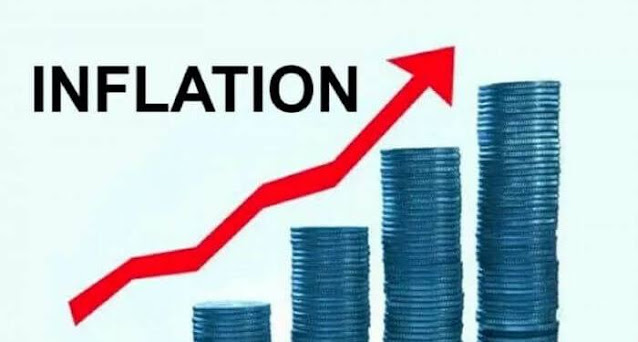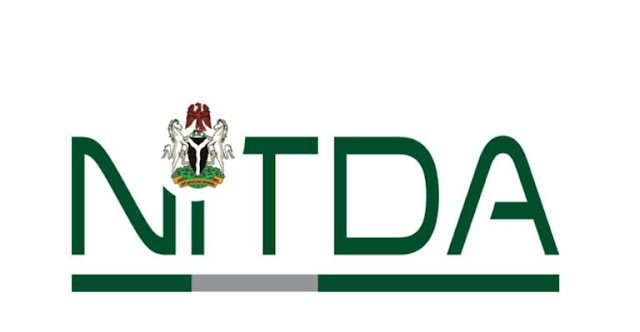Inflation remains one of the most pressing economic challenges in Nigeria, shaping the cost of living, business operations, and government policy. The National Bureau of Statistics (NBS) reported in its July 2025 Automotive Gas Oil (Diesel) Price Watch that Nigeria’s headline inflation rate slowed to 21.88% in July 2025, down from 22.22% in June 2025, marking a modest but notable decline. Core inflation, which excludes volatile items like food and energy, also eased to 21.33% year-on-year, a 6.13% drop from the 27.47% recorded in July 2024. These figures, while indicating a slowdown, reflect a persistently high inflationary environment that continues to strain households and businesses. This analysis will explore the drivers, trends, and implications of inflation in Nigeria for 2025, drawing on the NBS report and additional data from provided web sources to offer a holistic perspective.
Historical Context of Inflation in Nigeria
To understand Nigeria’s inflation trends in 2025, it is essential to examine the historical context. According to data from the International Monetary Fund (IMF) and the World Bank, Nigeria’s inflation rate has been volatile over the past six decades, ranging from a low of -3.7% (deflation) to a high of 72.8% between 1960 and 2024. The average inflation rate during this period was 16.5% per year, resulting in a cumulative price increase of 1.11 million percent, meaning an item costing 100 nairas in 1960 would cost 1.11 million nairas by early 2025. In the last five years alone (2020–2024), inflation averaged 21.2%, with a cumulative increase of 160%, compared to a much lower 4.2% average in the United States during the same period.
This historical volatility is largely attributed to structural economic challenges, including Nigeria’s dependence on oil exports, currency depreciation, and supply chain inefficiencies. The removal of fuel subsidies in 2023, a hallmark of President Bola Tinubu’s economic reforms, significantly accelerated inflation, pushing the headline rate to 34.8% by December 2024. The liberalization of the foreign exchange market further exacerbated price pressures, as the naira depreciated by 95.6% in 2023, increasing the cost of imported goods and services. These reforms, while aimed at long-term economic stabilization, have driven short-term inflationary spikes, setting the stage for the trends observed in 2025.
Current Inflation Trends in 2025
Headline Inflation: A Gradual Decline
The NBS report indicates that Nigeria’s headline inflation rate eased to 21.88% in July 2025, a 0.34% decrease from June’s 22.22%. This marks the fourth consecutive month of decline, following a peak of 34.8% in December 2024. The slowdown is attributed to several factors, including a statistical adjustment from the rebasing of the Consumer Price Index (CPI) to 2024 as the new base year, which altered the weightings of key inflation drivers like food and energy. The rebasing, supported by the World Bank, IMF, and Central Bank of Nigeria (CBN), aimed to align inflation measurements with current consumption patterns, reducing distortions from outdated methodologies.
Despite the decline, the headline inflation rate remains elevated, reflecting persistent cost-of-living pressures. On a month-on-month basis, inflation rose to 1.99% in July 2025, up from 1.68% in June, indicating that while the annual rate is slowing, prices are still increasing at a faster pace month-to-month. This suggests that short-term price pressures, particularly in food and transportation, continue to challenge households.
Core Inflation: Moderating but Persistent
Core inflation, which excludes volatile agricultural produce and energy prices, fell to 21.33% in July 2025, down from 27.47% in July 2024. This 6.13% year-on-year decline is significant, as it indicates a reduction in underlying price pressures not directly tied to food or fuel. On a month-on-month basis, core inflation dropped to 0.97% in July from 2.46% in June, reflecting a slowdown in price increases for non-volatile goods and services. The decline in core inflation is partly due to improved domestic food supply, relative exchange rate stability, and moderating energy costs, though structural cost drivers like transportation and production expenses continue to keep prices elevated.
Food Inflation: A Key Driver
Food inflation remains a critical component of Nigeria’s inflationary pressures, standing at 22.74% year-on-year in July 2025, down from 39.53% in July 2024. This significant decline is largely technical, driven by the CPI rebasing, which reduced the weighting of food in the inflation basket. On a month-on-month basis, food inflation was 3.12% in July, slightly lower than June’s 3.25%, attributed to lower prices for commodities like vegetable oil, beans, rice, maize flour, and wheat flour due to improved harvests. However, food inflation remains a major concern, as it constitutes a large portion of household expenditure, particularly for low-income families.
The persistent high food inflation is driven by structural issues, including insecurity in food-producing regions, severe weather events like flooding, low agricultural productivity, high transportation costs, and the ongoing impact of the war in Ukraine on imported grain prices. The aging farmer population and lack of young farmers further exacerbate supply constraints, keeping food prices elevated.
Regional and Urban-Rural Variations
The NBS data highlights significant regional and urban-rural disparities in inflation trends. Urban inflation in July 2025 was 22.01%, a 13.76% decrease from 35.77% in July 2024, while rural inflation stood at 21.08%, down 10.17% from 31.26% in the same period. On a month-on-month basis, urban inflation was 1.86% (down from 2.11% in June), while rural inflation rose to 2.30% (up from 0.63% in June), indicating faster price increases in rural areas. These differences reflect varying economic conditions, with urban areas benefiting from better access to markets and infrastructure, while rural areas face higher transportation costs and supply chain challenges.
At the state level, Borno recorded the highest year-on-year inflation rate at 31.63%, followed by Abuja at 26.79% and Benue at 25.91%. These high rates correlate with elevated diesel prices in states like Benue (N2,341.46 per litre), Adamawa (N2,163.88), and Plateau (N2,029.71), as fuel costs directly impact transportation and production expenses. Conversely, states with lower diesel prices, such as Ondo (N1,465.71), Zamfara (N1,470.35), and Gombe (N1,485.00), likely experience relatively lower inflationary pressures due to cheaper fuel.
Drivers of Inflation in 2025
Several factors are driving Nigeria’s inflation trends in 2025, as outlined below:
Fuel Price Volatility: The 29.72% year-on-year increase in diesel prices, from N1,379.48 in July 2024 to N1,789.45 in July 2025, underscores the impact of fuel costs on inflation. The 2023 removal of fuel subsidies led to a 167% increase in petrol prices, from N254 per litre in May 2023 to N671 in December 2023, contributing to higher transportation and production costs. While the slight month-on-month decline in diesel prices offers some relief, the high annual increase continues to drive inflation.
Currency Depreciation: The naira’s depreciation, which reached 41.4% in 2024, has significantly increased the cost of imported goods, including fuel, food, and raw materials. Although the naira gained 1.86% in January 2025, ongoing volatility in the foreign exchange market remains a key inflationary driver.
Supply Chain Disruptions: Insecurity, particularly banditry and kidnapping in northern states, has disrupted agricultural production and food supply chains, contributing to high food inflation. Severe weather events, such as flooding, have further constrained food supply.
Global Factors: The war in Ukraine has increased the prices of imported grains, while global oil price fluctuations have impacted diesel costs. Potential U.S. energy policies under a Trump administration could further influence global oil prices, affecting Nigeria’s fuel import costs.
Structural Challenges: Low agricultural productivity, aging farmers, and inadequate infrastructure, such as poor road networks, continue to drive up production and transportation costs, sustaining inflationary pressures.
Economic and Social Implications
The persistently high inflation rate, despite the recent slowdown, has profound implications for Nigeria’s economy and society. With headline inflation at 21.88% and food inflation at 22.74%, the cost of living remains a significant challenge for households, particularly low-income families who spend a large portion of their income on food. The World Bank estimates that Nigeria’s poverty rate reached 38.9% in 2023, with 87 million people living below the poverty line, making it the world’s second-largest poor population after India. High inflation exacerbates this, reducing purchasing power and driving multidimensional poverty, which includes lack of access to health, education, and basic services.
Businesses, especially SMEs, face increased operational costs due to high diesel prices and inflation. The manufacturing sector, which relies heavily on diesel-powered generators, is particularly affected, leading to higher production costs and reduced competitiveness. The transportation sector, a major consumer of diesel, has seen fares rise, impacting commuters and the cost of goods. These challenges threaten Nigeria’s economic growth, projected at 3.2% in 2024 and 3.4% in 2025, as inflation offsets gains from increased oil production and consumer demand.
Socially, high inflation fuels public discontent, as seen in protests and criticisms of the Tinubu administration’s economic policies. The opposition has capitalized on this, accusing the government of failing to mitigate the impact of subsidy removal and currency depreciation. The perception that inflation remains high despite reported declines, due to the CPI rebasing, has further eroded public trust in economic data.
Future Projections and Policy Considerations
Looking ahead, analysts offer varied projections for Nigeria’s inflation in 2025. Comercio Partners predicts a significant decline to around 15% in the first half of 2025, driven by a higher base effect, exchange rate stabilization, and normalized energy prices. Agusto & Co. expects inflation to peak in the first half of 2025 before moderating to an average of 30% by year-end, supported by sustained monetary tightening and increased food output. However, external risks, such as potential U.S. oil production increases, could strain Nigeria’s foreign exchange reserves, leading to renewed naira volatility and upward pressure on fuel prices.
The IMF forecasts a longer-term decline, estimating an average inflation rate of 14% by 2028, a 6.1% decrease from 2023 levels. This optimistic outlook hinges on improved domestic refining capacity, particularly from the Dangote Refinery, which could reduce reliance on imported fuel and stabilize prices.
To address inflation, policymakers should consider the following:
Enhancing Domestic Refining: Accelerating the operationalization of the Dangote Refinery and other facilities to reduce fuel import costs.
Strengthening the Naira: Implementing monetary policies to stabilize the forex market and reduce import-driven inflation.
Improving Agricultural Productivity: Addressing insecurity and investing in modern farming techniques to boost food supply and reduce food inflation.
Infrastructure Investment: Upgrading road networks and fuel distribution systems to lower transportation costs, particularly in high-price regions.
Targeted Social Interventions: Expanding cash transfers and subsidies for vulnerable households to mitigate the impact of high inflation.
Conclusion
Nigeria’s inflation trends in 2025 reflect a complex interplay of structural, policy-driven, and global factors. The NBS’s report of a headline inflation rate of 21.88% in July 2025, down from 22.22% in June, signals a cautious slowdown, supported by a decline in core inflation to 21.33%. However, the persistent high food inflation (22.74%) and a 29.72% year-on-year increase in diesel prices underscore ongoing economic challenges. Regional disparities, with states like Benue and Adamawa facing higher costs, highlight structural inequalities in Nigeria’s economy.
While the slowdown in inflation offers hope, the high cost of living continues to strain households and businesses. Policymakers must address root causes like fuel price volatility, currency depreciation, and supply chain disruptions to achieve sustainable stability. As Nigeria navigates its economic challenges, the interplay of inflation, fuel prices, and public sentiment will shape the Tinubu administration’s legacy and the country’s trajectory toward 2027.







